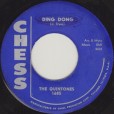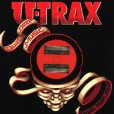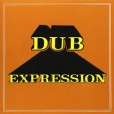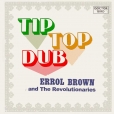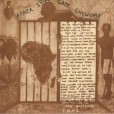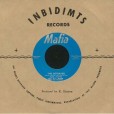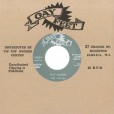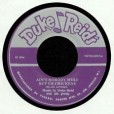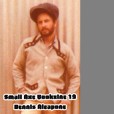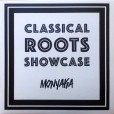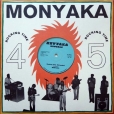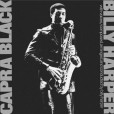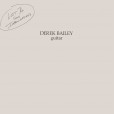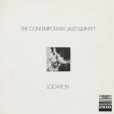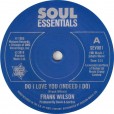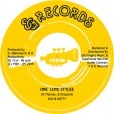Your basket is empty

Classic Dutch techno. The debut of Natasja Hagemeier and Jeroen Brandjes, in 1993. ‘Dream Techno.’
A top-notch selection of High Note and Gay Feet rhythms, expertly mixed the old-fashioned way by Duke Reid’s nephew, Errol Brown.
Brilliant toasting and singing by the likes of Prince Hammer, Echo Minott, Trinity and Lee Van Cliff, over gold-plated Roots Radics rhythms. A precious blend of heavier-than-lead roots, new-thing dancehall flow, and youthman promotion, curated by Hammer himself in 1982. Deeply enjoyable from start to finish.
Classy, proto-lovers, full-scale do-over of the Robert John 45 still big in Northern Soul circles.
The original arranger, none other than Gene Page gets a run for his money in the typically sophisticated instrumental version by Geoffrey Chung and the In Crowd.
Gripping, up-in-your-face account of the story of Judas. Full-on Keith Hudson roots.
And an unmissable nugget of flute-led JA funk, by the Soul Syndicate, on the flip.
Agony aunts Clifford Morrison and Dada Smith from The Bassies, with George Blake replacing Leroy Fischer, in 1969. Cornerstone moonstompers, both sides.
Roland Al tearing up Louis Jordan in 1962; plus a tasty, doowop-derived ska shuffle.
Both sides previously unreleased.
Fiery, bluesy, gospelized post-Coltrane bebop; blowing in from Texas, massive like Rollins. From 1975, this is one of the outstanding jazz records of that decade, and Harper’s best, with trumpeter Virgil Jones (who you know from sessions with Roland Kirk, Charles Tolliver and McCoy Tyner), pianist Joe Bonner (Pharoah Sanders, Harold Vick, Khan Jamal), David Friesen on bass and Malcolm Pinson on drums.
This iconic LP was originally released by Incus in 1974. Recorded at a private house in Catford, south-east London, the side-long title track is a masterwork: a twenty-two-minute, starkly personal, freely expressive, itchily searching re-casting of orders of rhythm and sound into a new, quicksilver kind of affective and musical polyphony. Never mind the guitarist’s championing of ‘non-idiomatic improvisation’, the poet Peter Riley gets the ball rolling in his identification of the various hauntings of Bailey’s playing at this time: ‘mandolins & balalaikas strumming in the distance, George Formby’s banjo, Leadbelly’s steel 12-string, koto, lute, classical guitar… and others quite outside the field of the plucked string.’
The five pieces on side two were recorded back home in Hackney around the same time — with the exception of Improvisation 104(b), from the year before (and issued by Incus in its TAPS series of mini reel-to-reel tapes) — opening with ventriloquised guitar feedback, and taking in some cod banter about colleagues like Mervyn Parker, Siegfried Brotzmann and Harry Bentink.
Crucial.
Born in Burlington, Vermont, and conservatory-trained in the US, the cellist Tristan Honsinger moved from Montreal to Amsterdam in 1974, quickly linking with Han Bennink and Misha Mengelberg, and opening a long and fruitful musical relationship with Derek Bailey. Recorded in 1976, Duo displays a performative musical approach already characterised by the lack of inhibition which would later endear him to The Pop Group: he is knockabout, exclamatory, explosively rhythmic; burping Bach and folk melodies with spasmodic lyricism, in amongst the garrulous textures and accents of his scraping, bowing and plucking, and gibbering like a monkey; throwing out his arms and stamping the floor, grappling with his instrument like an expert clown, always on the lookout for new ways to trip himself up. You can hear Bailey revelling in the company, as he ranges between scrabbling solidarity and an askance skewering of his partner’s antics, on prepared (nineteen-string) and standard electric guitars — and a Waisvisz Crackle-box, for the garbled, quizzical, cross-species natter which closes The Shadow. Throughout, the spirited interplay between laconic, analytic wit and guttural, sometimes slapstick physicality is consistently droll, often laugh-out-loud funny; vigorously alert, alive and gripping.
Legendary Northern — the last record played at the Wigan Casino — this archetypal heart-on-sleeve stomper was originally pressed in 1965 by Motown as a handful of promotional copies on its imprint SOUL. Most of these were destroyed soon afterwards, though people say Berry Gordy has a copy, and another was sold in 2009 for just over twenty-five grand.
A bit Whitey Mice, over a wicked mid-nineties Steely & Clevie.
